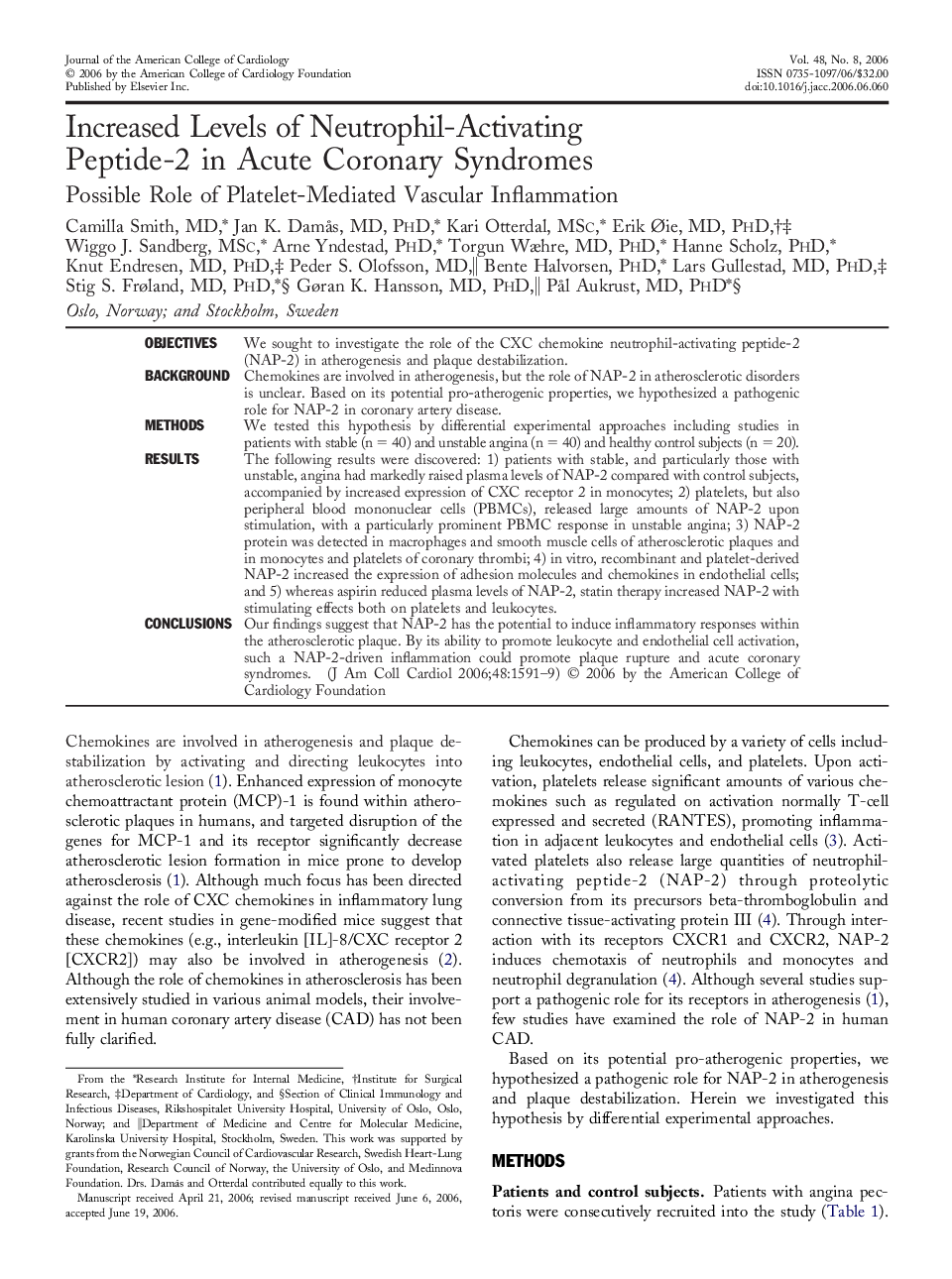| Article ID | Journal | Published Year | Pages | File Type |
|---|---|---|---|---|
| 2953939 | Journal of the American College of Cardiology | 2006 | 9 Pages |
ObjectivesWe sought to investigate the role of the CXC chemokine neutrophil-activating peptide-2 (NAP-2) in atherogenesis and plaque destabilization.BackgroundChemokines are involved in atherogenesis, but the role of NAP-2 in atherosclerotic disorders is unclear. Based on its potential pro-atherogenic properties, we hypothesized a pathogenic role for NAP-2 in coronary artery disease.MethodsWe tested this hypothesis by differential experimental approaches including studies in patients with stable (n = 40) and unstable angina (n = 40) and healthy control subjects (n = 20).ResultsThe following results were discovered: 1) patients with stable, and particularly those with unstable, angina had markedly raised plasma levels of NAP-2 compared with control subjects, accompanied by increased expression of CXC receptor 2 in monocytes; 2) platelets, but also peripheral blood mononuclear cells (PBMCs), released large amounts of NAP-2 upon stimulation, with a particularly prominent PBMC response in unstable angina; 3) NAP-2 protein was detected in macrophages and smooth muscle cells of atherosclerotic plaques and in monocytes and platelets of coronary thrombi; 4) in vitro, recombinant and platelet-derived NAP-2 increased the expression of adhesion molecules and chemokines in endothelial cells; and 5) whereas aspirin reduced plasma levels of NAP-2, statin therapy increased NAP-2 with stimulating effects both on platelets and leukocytes.ConclusionsOur findings suggest that NAP-2 has the potential to induce inflammatory responses within the atherosclerotic plaque. By its ability to promote leukocyte and endothelial cell activation, such a NAP-2-driven inflammation could promote plaque rupture and acute coronary syndromes.
